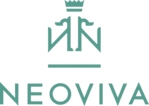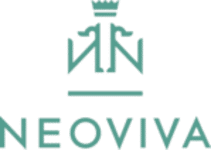Choosing and assessing the right treatment program for your personal situation can be a challenging and overwhelming process. Given there is no “one-size-fits-all”-approach to recovery, we have compiled a list of the most important, evidence-based treatment methods for you.
Acknowledging your struggle with addiction and concluding that you need professional help is the first important step towards recovery. After that step, however, you may find yourself already at a crossroads that splits into a myriad of ways, or rather, of treatment methods and programmes to choose from. Road signs are pointing to “inpatient treatment”, “outpatient care”, “Emotional Regulation”, and “SMART recovery”, or refer to abbreviations such as “DBT”, “ACT”, or “MAT”.
What to choose, where to go? The decision of which treatment program fits your situation best may be affected by various factors, such as your age and gender, maybe by the substance you are abusing, how much social support you may have and your health history among others. But don’t be discouraged. Don’t turn back from this crossroads, but keep on reading:
Inpatient or Outpatient Treatment?
The first decision to be made concerns the setting of the treatment. Treatment programs for substance use disorder (SUD) generally divide treatments into two main groups that differ in intensity: “inpatient” or “residential” and “outpatient”.
Inpatient (Residential)
In an inpatient program, you will live onsite at an addiction treatment facility that offers 24-hour medical support and care. This facility will be able to provide psychological and emotional support during critical moments of your stay. For example, inpatient treatment can help you when you have completed or are undergoing medical detox and need close clinical guidance in a supervised and supportive environment. Often people benefit from inpatient treatment if their daily lives, workplace, and social environment present too many triggers and drug- or alcohol-using opportunities. In inpatient treatment, these triggers are removed, and access to drugs or alcohol is restricted. That being said, inpatient treatment is often compared to a “safe bubble” and returning to daily life may be difficult as the environment from which one came has not changed. It may be advisable to transition to a sober living environment for a time while daily activities are slowly resumed.
Outpatient
In contrast to the inpatient setting, outpatient treatment is usually available close to where you live and takes place at a treatment centre or the practice of a psychologist, psychotherapist, or psychiatrist. The sessions are commonly scheduled once a week, maybe fortnightly. This setting works well for people who can manage their daily life and responsibilities. Normally you live at home (or another safe environment) while still being actively involved in your personal, family, and professional responsibilities. Outpatient programs usually address addictions that don’t require round-the-clock supervision. You visit your chosen treatment centre or practice for psychotherapy, psychiatric services and/or medical care on a regular, scheduled basis.
Intensive Outpatient (IOP)
Commonly IOP is suggested to people with a more severe addiction problem who need a more intensive treatment approach, yet do not wish to enter inpatient treatment. In IOP, the number and frequency of treatment sessions can be similar to inpatient settings but vary greatly between different IOP offers. Some may offer sessions three times per week for two to three hours, while others have multiple daily sessions. People who have been attending low-frequency outpatient treatment and have not been successful in managing their SUD may consider entering intensive outpatient treatment. An added benefit of IOP is the much higher level of supervision which may help with staying abstinent or controlling drug or alcohol use. For both, regular outpatient treatment and intensive outpatient treatment it is helpful to be living in an environment that supports the recovery efforts.
Even though the described settings differ in intensity, living situations, as well as cost, most of them utilize evidence-based treatment methods that have been scientifically evaluated and proven to be effective.
Treatment methods
Each of the following evidence-based practices offers a different focus regarding recovery. Many treatment facilities like NEOVIVA, may combine aspects of several practices to suit your particular situation.
ACT (Acceptance and Commitment Therapy)
ACT focuses on encouraging you to embrace your emotions rather than denying and struggling with them, thus helping you to move forward in your life and commit to the necessary changes.
CBT (Cognitive Behavioural Therapy)
CBT is a type of psychotherapeutic treatment that helps you identify and modify negative thought patterns that contribute to unhelpful behaviour and emotional distress. By changing those patterns of thinking you can improve your coping skills.
DBT (Dialectic Behavioural Therapy)
Based on CBT, DBT focuses on uniting two opposites: 1) the acceptance of your experience and 2) working towards the change of negative behaviours.
EFT (Emotion Focused Therapy)
EFT regards our emotions as guides for our choices and decisions. Lacking emotional awareness or avoiding emotions can therefore be harmful. With EFT our clients discover how emotions can help them in leading healthy lives.
EMDR (Eye Movement Desensitization and Reprocessing)
EMDR is a psychotherapeutic treatment, aiming to resolve traumatic memories and alleviate other distressing experiences.
IT (Interpersonal Therapy)
This time-limited evidence-based approach treats mood disorders and aims to improve your interpersonal relationships and social functioning to help reduce your emotional distress.
MAT (Medication-Assisted Treatment)
Medication-assisted treatment (MAT) is the use of medications in addition to counselling and behavioural therapies. This combination provides a comprehensive approach to addiction treatment. MAT programs are primarily used for the treatment of addiction to opioids such as heroin and substances that contain opiates. The medication aims to normalize brain chemistry and body functions, block the euphoric effects of the substances, and relieve cravings.
MI & MET (Motivational Interviewing & Motivational Enhancement Therapy)
MI is an interpersonal communication method, using open-ended questions and other counselling techniques to facilitate behaviour change by strengthening personal motivation. MET is based on a combination of assessments, goal setting and MI, and aims to lead you from feeling ambivalent regarding your recovery to assertively opting for change.
PMR (Progressive Muscle Relaxation)
Based on the simple technique of tensing and relaxing one muscle group at a time, PMR has been proven to efficiently reduce stress, and anxiety and help against insomnia.
rTMS (Repetitive Transcranial Magnetic Stimulation)
The painless, non-invasive rTMS uses magnetic pulses to stimulate the part of the brain that controls your mood and helps to reduce the symptoms of depression.
At NEOVIVA, we personalise your treatment by carefully balancing evidence-based, scientifically proven methods with innovative practice-based therapies. In addition to the above-mentioned treatments, our core 28-day signature programme includes therapeutical elements such as:
- Process-focused Group Therapy
- Experiential Therapy
- Stress Reduction Skills Training
- Body-centred therapies such as Yoga, Shirin Yoku, Qi Gong and others
- Animal-Assisted Therapy
Self-help organisations
Self-help organisations, also known as peer-based recovery support or mutual-aid groups, focus on the supportive sharing and exchanging of personal experiences in active addiction or recovery. Attendance in these groups is free of charge. However, while these groups offer a much-needed sense of belonging, comfort and motivation for people who struggle with a highly stigmatized condition, most of them are not led by professionals and are not considered therapy. Their valuable collective experience and wisdom should best be used in conjunction with evidence-based treatment.
Essentially, we can distinguish between two types of self-help models: 12-step organisations and secular (i. e. non-12-step) organisations.
12-Step organisations
Based on the belief that the experiences of one addict can help another, Alcoholics Anonymous (AA) was founded in 1936 by two alcoholics. Since then, AA has grown into a global fellowship with several million members and weekly meetings in all corners of the world. The 12 steps are a set of spiritual principles that outline the experiences of its members with recovery from addiction. 12-step fellowships see recovery as a spiritual process and although the original language emphasizes the presence of God or a Higher Power, many non-religious people have found the program helpful. 12-step organisations typically hold regular group meetings where attendees share their personal experiences with addiction and recovery and learn how to apply the 12-step principles in their daily life. AA still is the largest and most widely available of these mutual-aid organisations, followed by Narcotics Anonymous (NA) with more than 70’000 meetings weekly in 140 countries. Today you can choose between various 12-step-programs for different addictions or compulsive behaviours, ranging from AA (Alcoholics Anonymous), NA (Narcotics Anonymous), CA (Cocaine Anonymous) to SLAA (Sex and Love Addicts Anonymous), or GA (Gamblers Anonymous) and many more. They are all based on the original 12 steps of AA but individually adapted to suit their specific needs.
Secular self-help organisations
Given their focus on nonspiritual aspects of recovery, these organisations are commonly called “secular”. Most of them were founded to offer alternatives to the 12-step programs, as the latter’s spiritual focus doesn’t work for everyone. Compared to the worldwide prevalence and accessibility of the 12-step organisations, the reach of the secular groups is limited but still leaves you with an international choice of acronyms and abbreviations, such as SMART (Self-Management and Recovery Training), RR (Rational Recovery), LSR (LifeRing Secular Recovery), WFS (Women for Sobriety) or even ARM (Association of Recovering Motorcyclists) amongst many others.
Whether it is through a 12-step organisation or a secular group, mutual aid is one of the oldest forms of help for people suffering from substance abuse and addiction. Read more about the history of mutual aid and 12-step organisations in an article to follow soon.
Consult a clinician
With so many options available, you are probably still hesitant to evaluate the right path for you that leads to recovery. Fortunately, you do not have to decide on your own which type of treatment fits your situation best. Our experienced NEOVIVA team will be happy to assist you, so please contact us with any questions you may have.




0 Comments